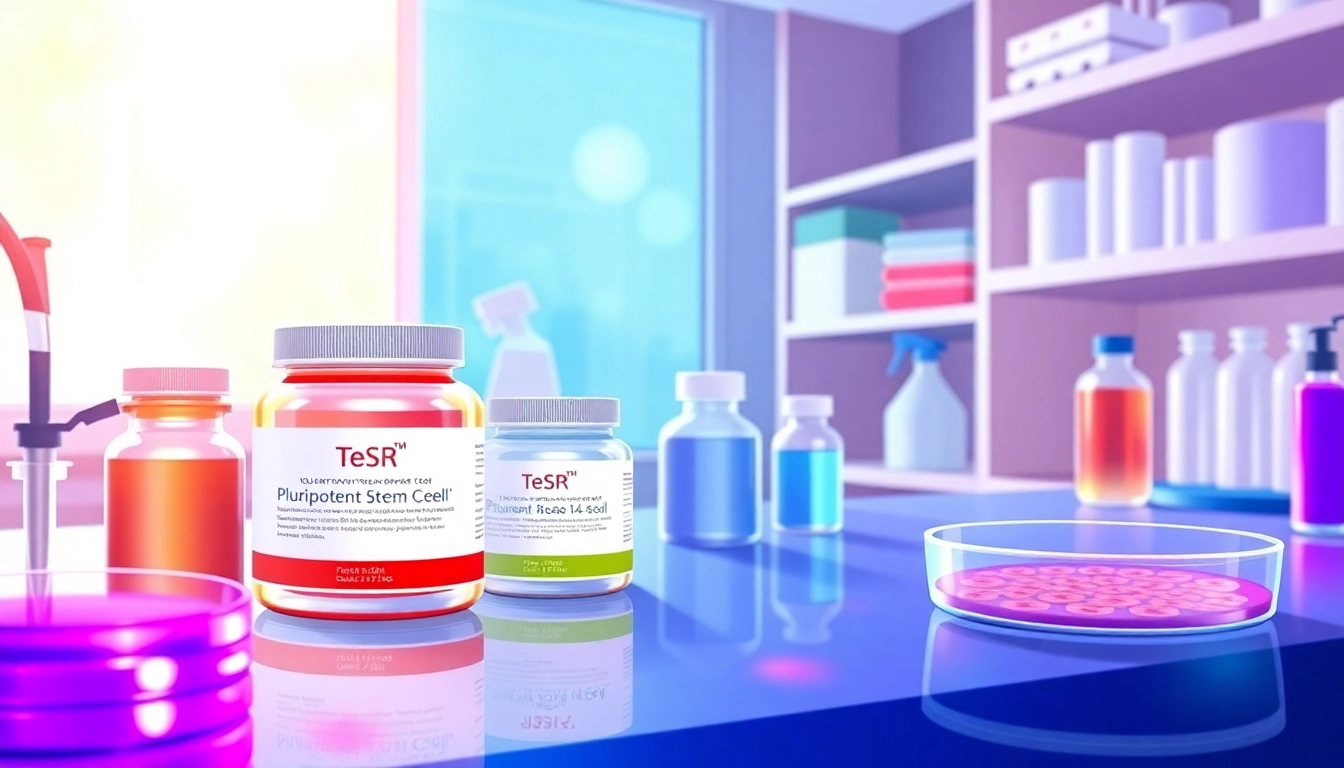Understanding TeSR™ Feeder-Free Media
Pluripotent stem cells (PSCs) have garnered significant interest in the fields of regenerative medicine, drug development, and disease modeling due to their remarkable ability to differentiate into nearly any cell type in the human body. However, the successful culture of these cells requires specialized media that can support their growth and maintenance. The TeSR™ family of feeder-free media from STEMCELL Technologies has become a staple in this domain, owing to its rigorous formulation and proven track record in research and applications.
What are Pluripotent Stem Cells?
Pluripotent stem cells are a specific type of stem cell capable of giving rise to various cell types that make up the three primary germ layers: ectoderm, mesoderm, and endoderm. Derived from both embryonic stem cells (ESCs) and induced pluripotent stem cells (iPSCs), these cells exhibit unique properties such as indefinite self-renewal and the ability to differentiate into specialized cell types. The application of PSCs in clinical and preclinical settings underscores the need for effective culture conditions that preserve their pluripotency while promoting controlled differentiation.
The Role of TeSR™ in Stem Cell Culture
TeSR™ media play a crucial role in the maintenance, expansion, and differentiation of hPSCs. They are designed to provide a defined, serum-free, feeder-free environment that promotes optimal cell growth while minimizing variability across experiments. The media formulations incorporate essential growth factors and nutrients that are necessary for maintaining the health and functionality of stem cells. Moreover, they serve as a bridge in the workflow of stem cell research—from reprogramming fibroblasts into iPSCs, maintaining these cells, to their ultimate differentiation into desired cell types.
Types of TeSR™ Media Available
The TeSR™ family includes various formulations tailored for specific applications:
- TeSR™-E8™: A low-protein maintenance medium that supports the culture of hPSCs with just the essential components.
- mTeSR™ Plus: Enhanced buffering capacity and stability to allow for greater flexibility during culture.
- TeSR™-AOF: Designed to be free of human and animal materials, ensuring higher safety standards.
- mFreSR™ and FreSR™-S: Formulations specifically engineered for cryopreservation of hPSCs.
- ReproTeSR™: Specially designed for reprogramming somatic cells into pluripotent stem cells.
Applications of TeSR™ Media in Research
Induced Pluripotent Stem Cell Reprogramming
The reprogramming of somatic cells to induced pluripotent stem cells (iPSCs) has become a revolutionary technique in regenerative medicine. TeSR™ media, particularly ReproTeSR™, have been instrumental in achieving high efficiency in reprogramming processes. This medium supports the optimal reprogramming of fibroblasts and other somatic cells, enabling researchers to generate iPSCs that are genetically identical to the donor cells.
Maintenance and Expansion of hPSCs
Once iPSCs are generated, maintaining their pluripotency is critical for downstream applications. TeSR™ media, especially mTeSR™ Plus and mTeSR™1, are renowned for their ability to maintain hPSC cultures over extended periods without losing their potential for differentiation. Rigorous testing and formulation ensure consistent cell health and viability, reducing the need for frequent media changes.
Differentiation Techniques for Stem Cells
Differentiating pluripotent stem cells into specific cell types requires precise protocols and media that support this transition. TeSR™ products, such as TeSR™-E5 and TeSR™-E6, are tailored to facilitate the differentiation of hPSCs into various lineages, including cardiac, hematopoietic, and neuronal cells. The ability to consistently achieve differentiated cell types is vital for their application in therapy and drug testing.
Key Features and Advantages
Consistent Quality and Reproducibility
The TeSR™ media family is distinguished by its strict quality control processes. Each batch is produced using rigorously pre-screened materials to ensure high levels of consistency and reproducibility. This reduces experimental variability and enhances the reliability of results in research settings.
Comparing TeSR™ Media: mTeSR™ vs. TeSR™-E8™
When selecting a media type, researchers often compare mTeSR™1 with TeSR™-E8™. While both support hPSC culture effectively, mTeSR™ Plus is often favored for its enhanced pH buffering and stability, allowing for longer intervals between media changes. In contrast, TeSR™-E8™ offers a simplified formulation with fewer components, making it ideal for applications that require a cleaner medium.
Benefits of Feeder-Free Culturing
The use of feeder-free media like TeSR™ has several advantages over traditional feeder-based systems. It eliminates variability that may arise from different feeder layers, such as fibroblasts. Moreover, feeder-free cultures facilitate easier manipulation and integration into automated systems, a significant advantage in large-scale applications and drug discovery.
Challenges in Pluripotent Stem Cell Culturing
Common Pitfalls and Solutions
Researchers frequently encounter challenges while culturing hPSCs, such as loss of pluripotency and differentiation issues. These challenges can often be attributed to suboptimal culture conditions or media formulations. Utilizing TeSR™ products that are specifically designed for each application can mitigate these issues. For instance, careful attention to the timing and conditions under which cells are passaged can prevent detrimental effects on cell quality.
Importance of Cytokines in Media
Cytokines play a critical role in maintaining the pluripotency and proliferation of stem cells. TeSR™ media formulations are enriched with specific cytokines that stimulate growth and prevent differentiation. Understanding the signaling pathways involved allows researchers to tailor their approaches further, optimizing conditions for robust cell culture.
Maintaining Genomic Integrity
Maintaining genomic integrity is paramount when working with hPSCs, as any alterations can affect the safety and effectiveness of therapeutic applications. The use of media with consistently defined components, such as the TeSR™ formulations, helps reduce the risk of genetic drift, ensuring that cultured cells retain their original characteristics throughout long-term cultivation.
Future Directions in Stem Cell Culture
The Evolution of TeSR™ Media
Since the inception of mTeSR™1, the TeSR™ media family has evolved significantly in response to the needs of researchers. New formulations continue to be developed with enhanced properties for specific applications, ensuring that they meet the rigorous standards required in modern stem cell research and therapy.
Innovations in hPSC Research
Innovative research techniques, such as 3D culture systems and bioreactor-based expansions, present exciting opportunities for improving hPSC growth and differentiation. TeSR™ media have adapted to accommodate these technologies, offering specialized formulations like mTeSR™3D that support the transition to more complex culture environments, thereby enhancing the functionality and maturity of derived cells.
Preparing for Clinical Applications
The ultimate goal of pluripotent stem cell research is to translate findings into viable clinical therapies. As the regulatory landscape evolves, TeSR™ media are manufactured in compliance with cGMP guidelines, paving the way for their adoption in clinical trials. This adherence to strict quality control measures ensures that stem cell therapies developed using these media will be safe and effective for human applications.















Leave a Reply